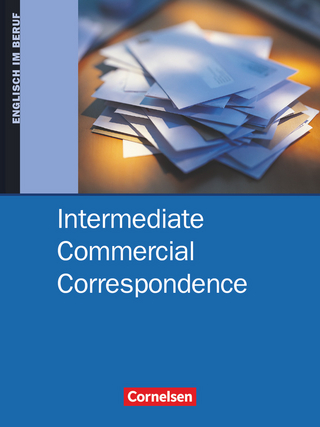
Applied Mergers and Acquisitions Workbook
John Wiley & Sons Inc (Verlag)
978-0-471-39585-0 (ISBN)
ROBERT F. BRUNER is the Distinguished Professor of Business Administration at the Darden School of the University of Virginia and Executive Director of the Batten Institute. He directs the Darden School's executive education course on mergers and acquisitions, and teaches the popular MBA elective on that topic. He is the author of over 250 case studies and a casebook, Case Studies in Finance: Managing for Corporate Value Creation, which has been adopted for use at over 200 schools. Bruner's articles have been published in the Journal of Financial Economics, the Journal of Accounting and Economics, the Journal of Financial and Quantitative Analysis, the Journal of Money, Credit, and Banking, and Financial Management. He has served as a consultant to over twenty corporations as well as to the U.S. Government, and prior to his academic career, worked as a commercial banker and venture capitalist. Bruner holds a BA from Yale University, and an MBA and DBA from Harvard University.
Introduction to the Workbook. PART ONE: QUESTIONS.
Chapter 1: Introduction and Executive Summary.
Chapter 2: Ethics in M&A.
Chapter 3: Does M&A Pay?
Chapter 4: M&A Activity.
Chapter 5: Cross-Border M&A.
Chapter 6: Strategy and the Uses of M&A to Grow or Restructure the Firm.
Chapter 7: Acquisition Search and Deal Origination: Some Guiding Principles.
Chapter 8: Due Diligence.
Chapter 9: Valuing Firms.
Chapter 10: Valuing Options.
Chapter 11: Valuing Synergies.
Chapter 12: Valuing the Firm across Borders.
Chapter 13: Valuing the Highly Levered Firm, Assessing the Highly Levered Transaction.
Chapter 14: Real Options and Their Impact on M&A.
Chapter 15: Valuing Liquidity and Control.
Chapter 16: Financial Accounting for Mergers and Acquisitions.
Chapter 17: Momentum Acquisition Strategies: An Illustration of Why Value Creation Is the Best Financial Criterion.
Chapter 18: An Introduction to Deal Design in M&A.
Chapter 19: Choosing the Form of Acquisitive Reorganization.
Chapter 20: Choosing the Form of Payment and Financing.
Chapter 21: Framework for Structuring the Terms of Exchange: Finding the “Win-Win” Deal.
Chapter 22: Structuring and Valuing Contingent Payments in M&A.
Chapter 23: Risk Management in M&A.
Chapter 24: Social Issues.
Chapter 25: How a Negotiated Deal Takes Shape.
Chapter 26: Governance in M&A: The Board of Directors and Shareholder Voting.
Chapter 27: Rules of the Road: Securities Law, Issuance Process, Disclosure, and Insider Trading.
Chapter 28: Rules of the Road: Antitrust Law.
Chapter 29: Documenting the M&A Deal.
Chapter 30: Negotiating the Deal.
Chapter 31: Auctions in M&A.
Chapter 32: Hostile Takeovers: Preparing a Bid in Light of Competition and Arbitrage.
Chapter 33: Takeover Attack and Defense.
Chapter 34: The Leveraged Restructuring as a Takeover Defense: The Case of American Standard.
Chapter 35: Communicating the Deal: Gaining Mandates, Approval, and Support.
Chapter 36: Framework for Postmerger Integration.
Chapter 37: Corporate Development as a Strategic Capability: The Approach of GE Power Systems.
Chapter 38: M&A “Best Practices”: Some Lessons and Next Steps.
PART TWO: ANSWERS.
Chapter 1: Introduction and Executive Summary.
Chapter 2: Ethics in M&A.
Chapter 3: Does M&A Pay?
Chapter 4: M&A Activity.
Chapter 5: Cross-Border M&A.
Chapter 6: Strategy and the Uses of M&A to Grow or Restructure the Firm.
Chapter 7: Acquisition Search and Deal Origination: Some Guiding Principles.
Chapter 8: Due Diligence.
Chapter 9: Valuing Firms.
Chapter 10: Valuing Options.
Chapter 11: Valuing Synergies.
Chapter 12: Valuing the Firm across Borders.
Chapter 13: Valuing the Highly Levered Firm, Assessing the Highly Levered Transaction.
Chapter 14: Real Options and Their Impact on M&A.
Chapter 15: Valuing Liquidity and Control.
Chapter 16: Financial Accounting for Mergers and Acquisitions.
Chapter 17: Momentum Acquisition Strategies: An Illustration of Why Value Creation Is the Best Financial Criterion.
Chapter 18: An Introduction to Deal Design in M&A.
Chapter 19: Choosing the Form of Acquisitive Reorganization.
Chapter 20: Choosing the Form of Payment and Financing.
Chapter 21: Framework for Structuring the Terms of Exchange: Finding the “Win-Win” Deal.
Chapter 22: Structuring and Valuing Contingent Payments in M&A.
Chapter 23: Risk Management in M&A.
Chapter 24: Social Issues.
Chapter 25: How a Negotiated Deal Takes Shape.
Chapter 26: Governance in M&A: The Board of Directors and Shareholder Voting.
Chapter 27: Rules of the Road: Securities Law, Issuance Process, Disclosure, and Insider Trading.
Chapter 28: Rules of the Road: Antitrust Law.
Chapter 29: Documenting the M&A Deal.
Chapter 30: Negotiating the Deal.
Chapter 31: Auctions in M&A.
Chapter 32: Hostile Takeovers: Preparing a Bid in Light of Competition and Arbitrage.
Chapter 33: Takeover Attack and Defense.
Chapter 34: The Leveraged Restructuring as a Takeover Defense: The Case of American Standard.
Chapter 35: Communicating the Deal: Gaining Mandates, Approval, and Support.
Chapter 36: Framework for Postmerger Integration.
Chapter 37: Corporate Development as a Strategic Capability: The Approach of GE Power Systems.
Chapter 38: M&A “Best Practices”: Some Lessons and Next Steps.
| Erscheint lt. Verlag | 16.3.2004 |
|---|---|
| Reihe/Serie | Wiley Finance Editions |
| Zusatzinfo | Exhibits: 200 B&W, 0 Color |
| Verlagsort | New York |
| Sprache | englisch |
| Maße | 175 x 252 mm |
| Gewicht | 680 g |
| Themenwelt | Wirtschaft ► Betriebswirtschaft / Management ► Planung / Organisation |
| ISBN-10 | 0-471-39585-4 / 0471395854 |
| ISBN-13 | 978-0-471-39585-0 / 9780471395850 |
| Zustand | Neuware |
| Informationen gemäß Produktsicherheitsverordnung (GPSR) | |
| Haben Sie eine Frage zum Produkt? |
aus dem Bereich


